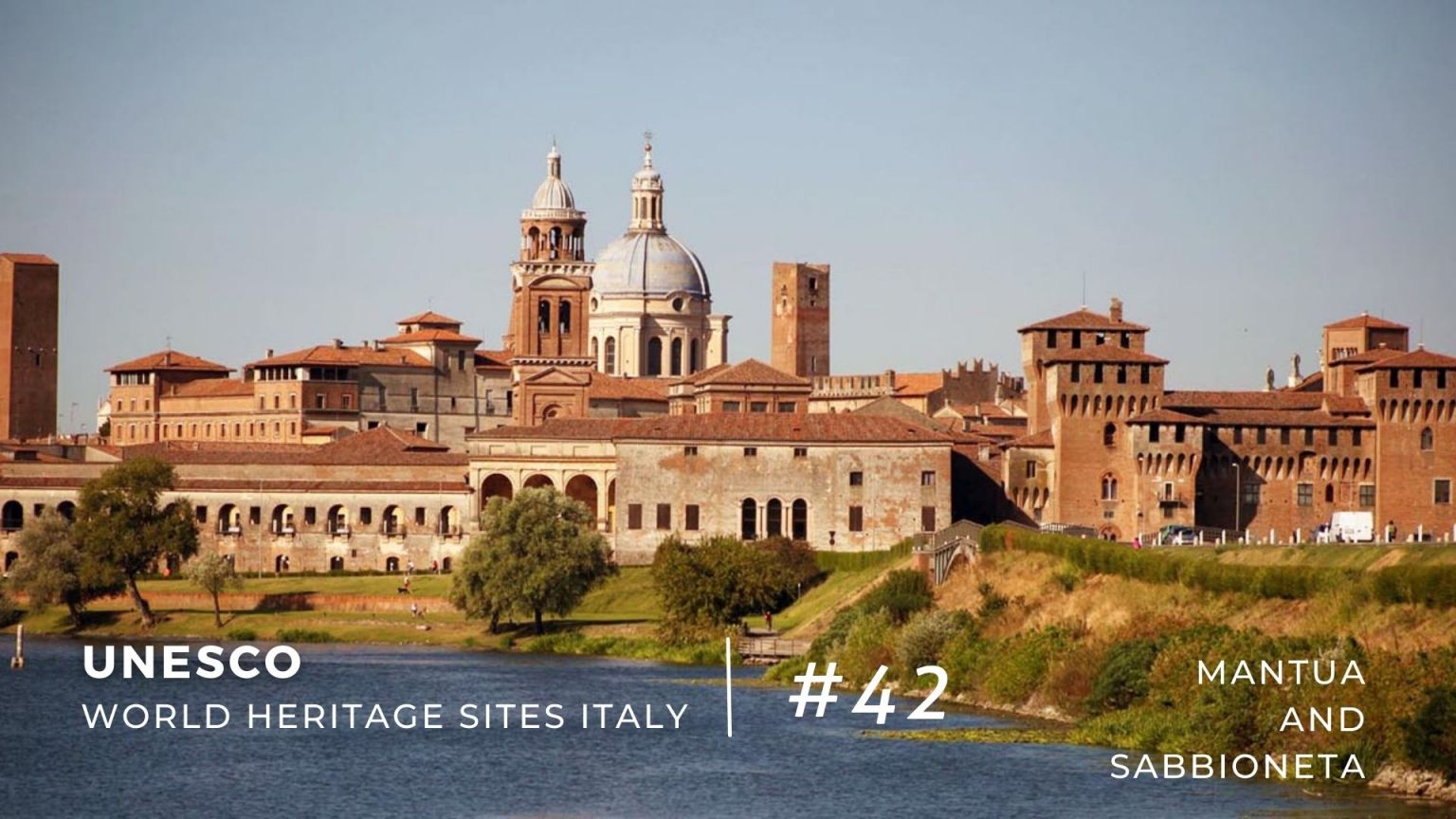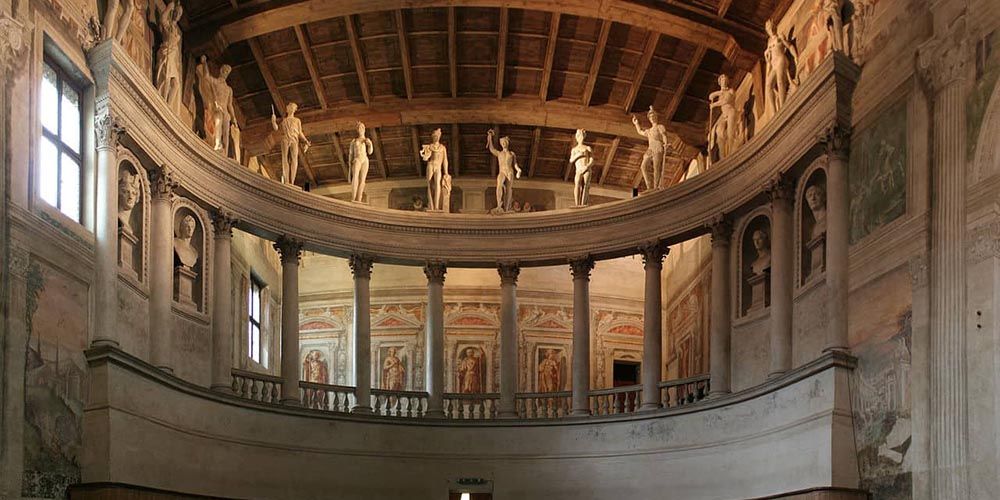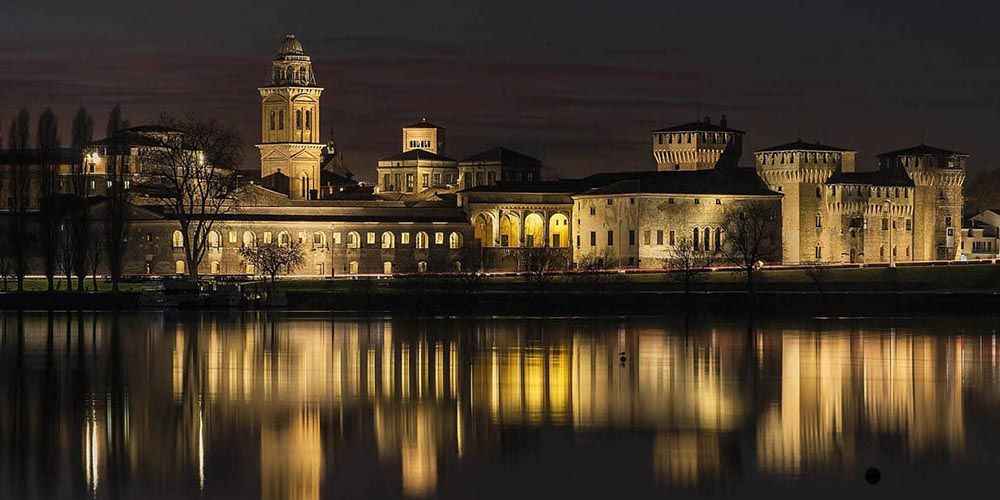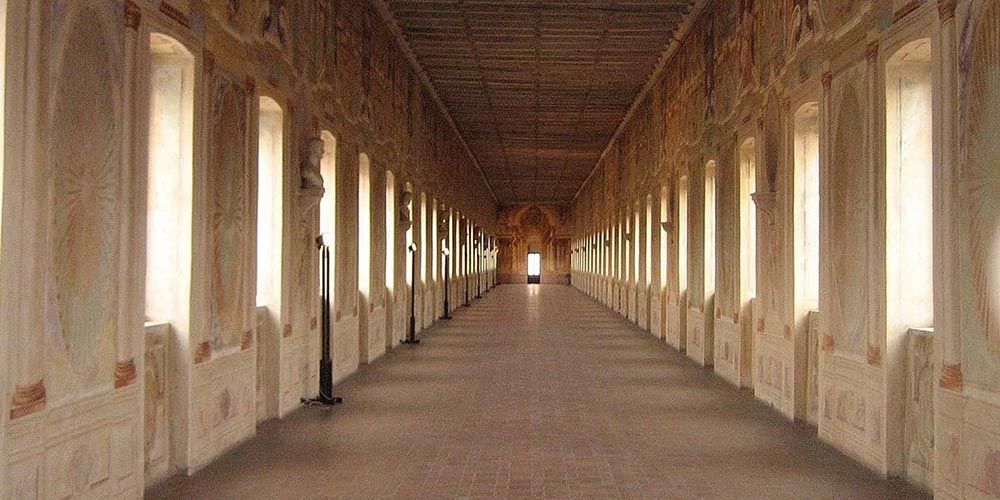The common thread that unites the cities of Mantua and Sabbioneta is the hand of the powerful Gonzaga family, once the hegemonic family of Mantua. The Gonzagas surrounded themselves with the best artists of the time such as Mantegna, Alberti, Scamozzi, leaving us as a legacy artistic works of great value, and two cities: Mantua and Sabbioneta.
Mantua and Sabbioneta have an urban form that summarizes the ideal architectural canons of the Renaissance, they soon became a model of inspiration for the following generations. Visiting these places, registered as a UNESCO heritage site since 2008, is a journey through time that we recommend you undertake. Come and discover the cities of Mantua and Sabbioneta, a UNESCO heritage site since 2008!

Mantua and Sabbioneta, UNESCO heritage sites since 2008
Mantua is the city of the Latin poet Virgil and of the delicious sbrisolona cake, it contains an artistic heritage of undisputed value. Having passed under the dominion of several important families, such as the Canossa, with the famous Countess Matilde, and finally the Gonzaga, Mantua is one of the best Italian cities for environmental and life quality. It is surrounded by three lakes created by the widening of the Mincio river, which give it a suggestive atmosphere, especially when the fog rises.
To visit all the excellences of Mantua you need about two days. Before exploring the historic centre, enjoy the view of the city from Ponte San Giorgio, from where Mantua appears in all its fairy-tale appearance, standing out clearly against the horizon.
Sabbioneta is halfway between Mantua and Parma, a little gem with just over 4000 inhabitants in the heart of the Po Valley, Sabbioneta is included in the list of the 100 most beautiful villages in Italy and embodies the ideal example of application of Renaissance theories on how design a city.
Surrounded by mighty perimeter walls, which can be visited thanks to a pedestrian path, the center of the town offers wonderful glimpses of times gone by, often used by famous directors to set their films, such as the film The Spider's Strategy by Bernardo Bertolucci. The statue of Minerva, goddess of wisdom, stands on a marble column in the center of the village, of which she is considered the protector.
Why Mantua and Sabbioneta are UNESCO heritage sites
In 2008, thanks to the universal value of the rich legacy of the Gonzagas, the site of Mantua and Sabbioneta became part of the UNESCO World Heritage List.
The registration occurred because Mantua and Sabbioneta offer an exceptional testimony of urban, architectural and artistic realization of the Renaissance, connected to each other through the ideas and ambitions of the ruling family, the Gonzagas. They represent the most eminent examples of the two most emblematic modes of Renaissance urban planning, the evolutionary and the foundational ones respectively.
Sabbioneta, built at the behest of Vespasiano I Gonzaga within thirty years and completed in 1591, obeys all the Renaissance urban planning precepts to create a city of harmonious proportions, enclosed in a hexagonal city wall with a still visible moat.
Mantua was instead one of the centers of the Italian Renaissance, patiently transformed by the work of artists who left a profound mark on the city's architecture from Pisanello to Andrea Mantegna, Leon Battista Alberti and Giulio Romano.
What to see in Mantua
Mantua is a city full of attractions. Let's start from the Palazzo Ducale, where the Gonzaga family lived. A place of art and government, this majestic palace contains almost 600 rooms, hanging gardens, a cycle of frescoes by Pisanello, a painting by Rubens dedicated to the Gonzagas and the Castle of San Giorgio. It is in the castle that the most famous work of art in Mantua is preserved, Mantegna's Camera degli Sposi, a room frescoed with illusionist paintings. A visit to the palace is an absolute must. Let's move on to the city squares, among which Piazza delle Erbe stands out, the commercial heart of Mantua and former market place, today full of bars and restaurants under the arcades, in the shadow of the astronomical clock and the Rotonda di San Lorenzo. Honorable mention for Piazza del Broletto and the airy Piazza Sordello with the Duomo, burial place of many Gonzagas.
Don't miss the imposing Renaissance-style Church of Sant'Andrea, which still preserves a reliquary with the earth soaked in the blood of Christ, collected by the Roman centurion Longinus, and on display every Good Friday. Finally, we recommend a stop at Palazzo Te, a beautiful Renaissance-style villa commissioned by the Gonzagas to Giulio Romano, painter and architect. The villa is home to the civic museum and is famous for its Hall of the Giants, a room with a ceiling frescoed in 1535 by Romano, which portrays the epic battle between the Giants and Zeus.
In Mantua you can walk or cycle along the lakeside, a relaxing walk that runs along the three lakes of the city. Perfect for spring, a boat ride on the Mincio is interesting for enjoying the quiet of the lakes and seeing the Mincio Park, a protected natural area that extends from Mantua to Lake Garda. If you then want to discover Lake Garda better, we suggest a boat tour on Lake Garda.
What to see in Sabbioneta
In Sabbioneta we recommend starting your visit from the sumptuous Olympic Theatre, also called Teatro all'Antica, the first European example of a permanent theatre, therefore not created from pre-existing buildings. The interior of the theater is splendid, with statues and columns in full Renaissance style, with wonderfully frescoed walls. Ideal to visit with a guide. A stop is a must at the Palazzo Ducale and the Palazzo Giardino, which are the places where the trace left by Gonzaga is strongest.
The beautiful Gallery of the Ancients is also worth a visit, one hundred meters of columns, arches and frescoes, once the place where Vespasiano Gonzaga kept his archaeological collection. The gallery is second in length only to the Gallery of Geographical Maps of the Vatican and that of the Uffizi.
There are several churches worthy of attention, including the Church of Santa Maria Assunta and the Church of the Incoronata, where you can see the Duke's mausoleum.
Lastly, the Museum of Sacred Art A passo d'uomo, among the various paintings, ancient coins and sacred objects, preserves the Golden Fleece of Vespasiano I Gonzaga, the highest honor of the Spanish crown, which the duke was awarded.
Mantua and Sabbioneta, UNESCO heritage sites since 2008, last tips

If you arrive from Milan you can easily reach Mantua and Sabbioneta by car or alternatively by train. If you are in Milan we highly recommend adding these two cities to your itinerary, they are worth a visit even just for a day, ideal destinations for a weekend. Even just to change the atmosphere a bit and taste the good food of these parts, thanks to the encounter between traditional peasant foods and the more refined ones of the great Gonzaga chefs.
Halfway between Emilian and Lombard gastronomy, the cuisine offers high-quality cured meats, such as Mantuan salami and coppa, risotto, in particular the risotto alla pilota one and mouth-watering first courses such as Agnolini and pumpkin tortelli. Cotechini, boiled meat accompanied by local mustard and freshwater fish, such as pike and catfish complete the main traditional dishes.
A separate discussion must be made for the desserts, especially the sbrisolona cake, a very crumbly dessert made with almonds, a true culinary symbol of the city of Mantua. But local pastry shops are also famous for other cakes, among which the most popular are certainly the Margherita cake, the Elvezia cake and the Monaco ring, which vaguely resembles panettone, but in the shape of a donut. We just have to wish you a good visit to Mantua and Sabbioneta.
About the author
Written on 15/12/2021







Fabrizio Mariani
Mantua and Sabbioneta, UNESCO sites since 2008, represent the precious legacy of the Gonzagas and embody the urban planning ideals of the Renaissance